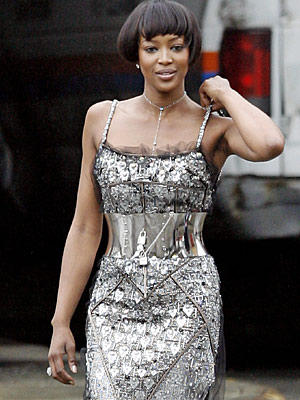Sab 24 Mar 2007


 Two Australians have invented software that rates looks, writes Daniel Dasey.
Two Australians have invented software that rates looks, writes Daniel Dasey.
TWO Australian scientists have invented computer software that distinguishes a beautiful face from a less attractive one.Their invention uses facial measurements, related to ratios and images of models, actors and some 200 women from around the world.After a photograph of a woman’s face is put into the program, it returns a beauty rating of between one and 10.University of Technology Sydney computer scientists Hatice Gunes and Massimo Piccardi believe the software could be used in fields such as cosmetic surgery.”Potential applications exist in the entertainment industry, cosmetic industry, virtual media and plastic surgery,” they explain in the International Journal of Human-Computer Studies.Their preference is for the medical profession to use it under supervised conditions to avoid situations where vulnerable people could harm their self-image.Dr Piccardi said his and Ms Gunes’ work grew out of efforts to make computers more people-friendly by enhancing their ability to recognise faces and moods.To develop their system, they divided the face into measurements such as the distance between the top of the face and the chin and between the eyes.They assembled 215 images of women of different ages, levels of attractiveness and ethnic backgrounds, including photographs of Claudia Schiffer (pictured), Kate Moss and Catherine Zeta-Jones.The images were shown to a mixed gender, multi-racial panel of 50 volunteers who gave each face a rating of between one and 10.They found while participants sometimes varied greatly in the ratings they gave, overall there was significant agreement over what was an attractive face.Next they analysed the facial measurements of the women in the test images as well as the ratios between the measurements.By looking for correlations, they were able to determine the features common in beautiful women, and develop software that combined this with facial-analysis technology.The software has been fine-tuned over several years. When shown an image, the software is capable of predicting what a panel of humans would give the face plus or minus 1.5 marks. Further development should reduce the margin of error.Dr Piccardi said one use might be for plastic surgery patients who were unsure whether modifications suggested by their doctor would improve their attractiveness. While the software has been developed only to assess women, it could be adapted to rate men.Dr Piccardi said one danger of the software was that it could fall into the hands of adolescents or others sensitive about their looks and harm their self- image.
Â
Leave a Reply
You must be logged in to post a comment.